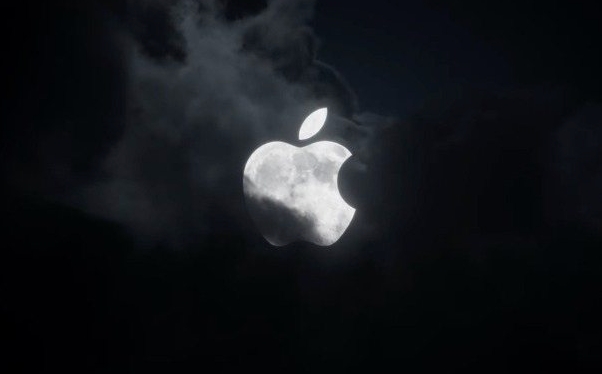How to allow apps from unidentified developers on Mac
Jul 29, 2025 am 03:52 AMTo open an app from an unidentified developer on macOS, first attempt to open it normally, which triggers a security warning; 2. Then go to System Settings > Privacy & Security and click “Open Anyway” under the security message for the app; 3. Confirm by clicking Open in the dialog that appears, after which the app will launch and be allowed in the future; 4. If “Open Anyway” doesn’t appear, right-click the app in Finder and choose Open to prompt the system to display the option; 5. This method safely overrides Gatekeeper for trusted apps without disabling system-wide security, ensuring continued protection against potential threats.

On macOS, apps from unidentified developers are blocked by default for security reasons. But if you trust a specific app from a developer not recognized by Apple, you can allow it to run. Here's how.

Why the Block Happens
macOS uses a security feature called Gatekeeper to ensure only trusted apps are installed. Apps from the Mac App Store and identified developers (those with an Apple-issued developer certificate) are automatically allowed. If an app comes from someone without this certification, macOS blocks it and shows a message like “App is damaged and can’t be opened” or “Can’t be opened because it’s from an unidentified developer.”
How to Open an App from an Unidentified Developer
It’s not about globally disabling security — instead, macOS lets you override the block on a per-app basis.

Try to open the app first
Double-click the app as usual. You’ll likely see a warning dialog saying the app can’t be opened because it’s from an unidentified developer.-
Go to System Settings > Privacy & Security
Click the Apple menu → System Settings → Privacy & Security (on older macOS versions, this is System Preferences).
Look for the “Open Anyway” option
Under the Security section, you should see a message like:
“The app [AppName] was blocked from opening because it is from an unidentified developer.”
Next to it, click Open Anyway.Confirm the action
A dialog will appear asking if you’re sure you want to open the app. Click Open. The app will launch, and macOS will now remember your choice.
After this, the app should open normally in the future.
What If “Open Anyway” Doesn’t Appear?
Sometimes the option doesn’t show up right away. Try this:
- Right-click (or Control-click) the app in Finder.
- Choose Open from the context menu.
- A dialog will appear with an Open button — click it.
- This triggers the system to log the attempt, and then the “Open Anyway” option usually appears in Privacy & Security.
Important Notes
- You don’t need to disable Gatekeeper or use Terminal commands in most cases — doing so reduces your security.
- Only bypass this for apps you trust. Malware often disguises itself as useful tools from unknown sources.
- If the app still won’t open or crashes, it may be incompatible with your macOS version or actually damaged.
Basically, macOS gives you a safe way to run unverified apps without lowering your overall protection. Just use the “Open Anyway” option after an initial blocked attempt.
The above is the detailed content of How to allow apps from unidentified developers on Mac. For more information, please follow other related articles on the PHP Chinese website!

Hot AI Tools

Undress AI Tool
Undress images for free

Undresser.AI Undress
AI-powered app for creating realistic nude photos

AI Clothes Remover
Online AI tool for removing clothes from photos.

Clothoff.io
AI clothes remover

Video Face Swap
Swap faces in any video effortlessly with our completely free AI face swap tool!

Hot Article

Hot Tools

Notepad++7.3.1
Easy-to-use and free code editor

SublimeText3 Chinese version
Chinese version, very easy to use

Zend Studio 13.0.1
Powerful PHP integrated development environment

Dreamweaver CS6
Visual web development tools

SublimeText3 Mac version
God-level code editing software (SublimeText3)

Hot Topics
 How to Remove Old Devices from Apple ID on Mac
Jul 07, 2025 am 09:08 AM
How to Remove Old Devices from Apple ID on Mac
Jul 07, 2025 am 09:08 AM
If you've owned multiple Apple devices over the years, you might find yourself in a situation where some of those older Macs, iPhones, iPads, or other Apple hardware have been sold, given away, or traded. No matter how they left your possession, it's
 How to Play Fortnite on Mac with FnMacAssistant & Sideloadly
Jul 05, 2025 am 09:21 AM
How to Play Fortnite on Mac with FnMacAssistant & Sideloadly
Jul 05, 2025 am 09:21 AM
Fortnite is once again available for iPhone and iPad users, bringing joy to many gamers. However, there's still no official version for Mac (at least not yet). Despite that, Apple Silicon Mac owners aren’t completely out of luck—you can run the iOS/i
 How to Enable iCloud Private Relay on Mac
Jul 05, 2025 am 09:36 AM
How to Enable iCloud Private Relay on Mac
Jul 05, 2025 am 09:36 AM
iCloud Private Relay is an excellent privacy feature included with the iCloud subscription, designed to safeguard your online activity and browsing by masking your IP address (using a temporary one) and encrypting DNS lookups. This prevents third pa
 How to Allow Apps During Downtime on Mac
Jul 04, 2025 am 09:03 AM
How to Allow Apps During Downtime on Mac
Jul 04, 2025 am 09:03 AM
Are you using Screen Time to manage your or your child’s Mac usage? If yes, you likely already know that it allows you to set app limits, schedule downtime on the Mac, and more. Additionally, you can also choose specific apps that remain accessible a
 How to Make MacOS Sequoia Feel Faster: Tips to Speed Up Slow MacOS
Jul 05, 2025 am 09:28 AM
How to Make MacOS Sequoia Feel Faster: Tips to Speed Up Slow MacOS
Jul 05, 2025 am 09:28 AM
macOS Sequoia is a solid operating system that brings some impressive features like iPhone Mirroring, and while performance is excellent for many users, not everyone experiences the same level of speed. If you're finding macOS Sequoia slower than pre
 How to See All Links Shared in Messages on iPhone & iPad
Jul 05, 2025 am 09:31 AM
How to See All Links Shared in Messages on iPhone & iPad
Jul 05, 2025 am 09:31 AM
If you frequently use iMessage, then you've likely shared numerous web links in your chats — maybe an article, a video, a tweet, a song, or anything else. Locating these links later can be quite frustrating, but thankfully there's a simpler method th
 Create a MacOS Tahoe 26 Beta VM with Three Commands in Terminal Using tart
Jul 06, 2025 am 09:28 AM
Create a MacOS Tahoe 26 Beta VM with Three Commands in Terminal Using tart
Jul 06, 2025 am 09:28 AM
Advanced Mac users familiar with the command line can swiftly set up a MacOS Tahoe 26 beta virtual machine by entering a few commands into Terminal, using tart. Tart is a command-line utility for managing virtual machines and offers one of the quicke
 WindowServer Quit Unexpectedly: How to Fix It on Mac Air/Pro?
Jul 05, 2025 am 09:17 AM
WindowServer Quit Unexpectedly: How to Fix It on Mac Air/Pro?
Jul 05, 2025 am 09:17 AM
What is WindowServer and why is it importantWindowServer is a core macOS process that manages how apps and windows appear on screen. It handles GUI rendering, controls internal and external displays, and enables all vis







